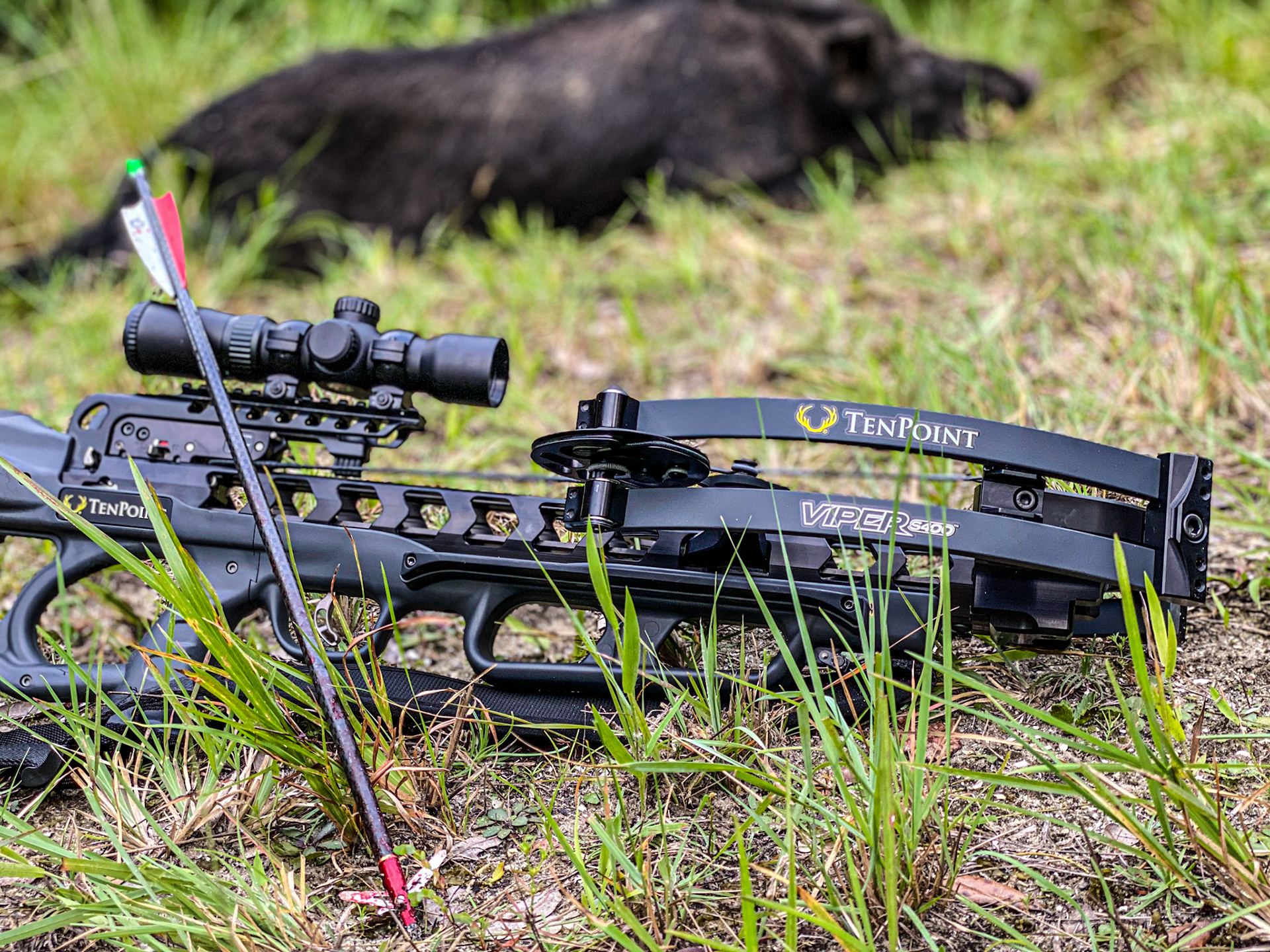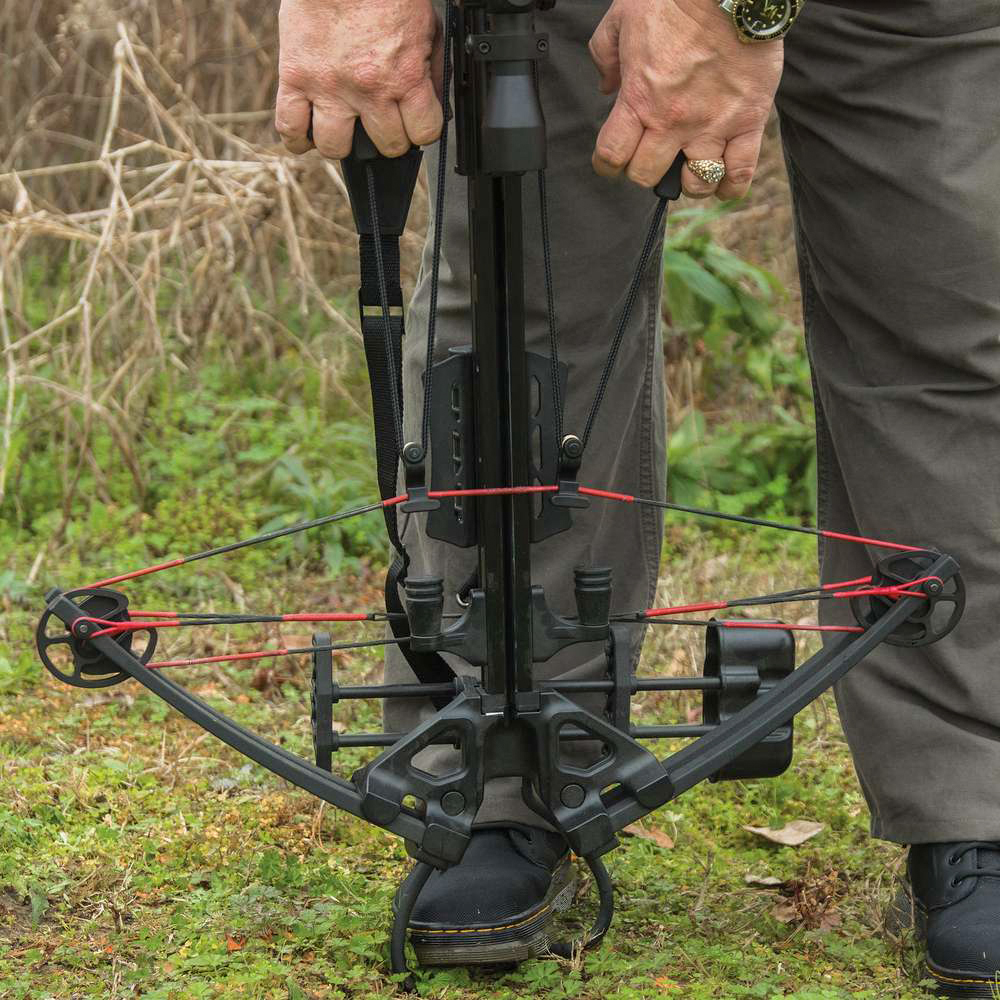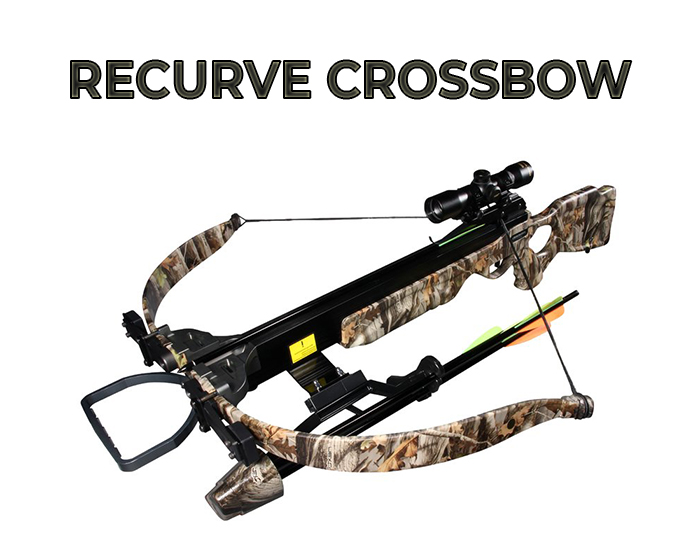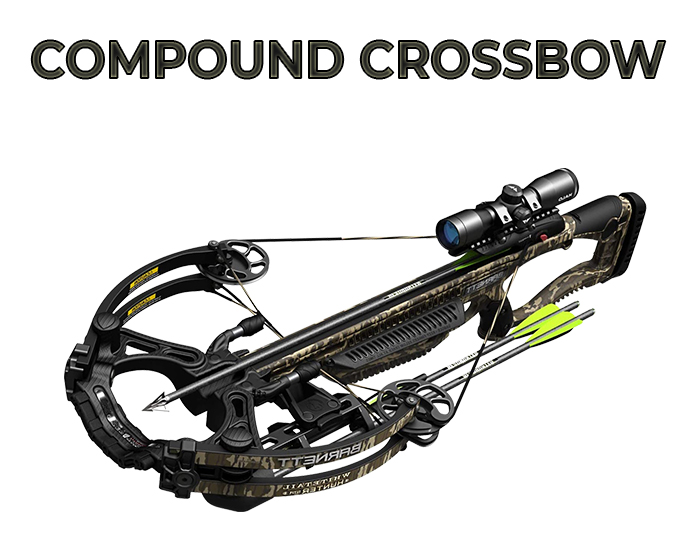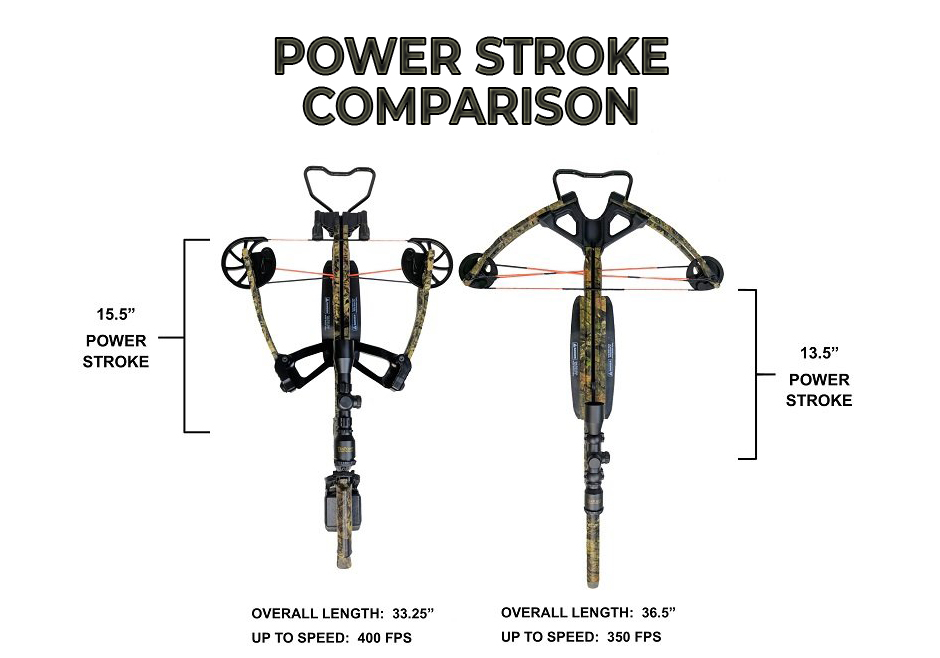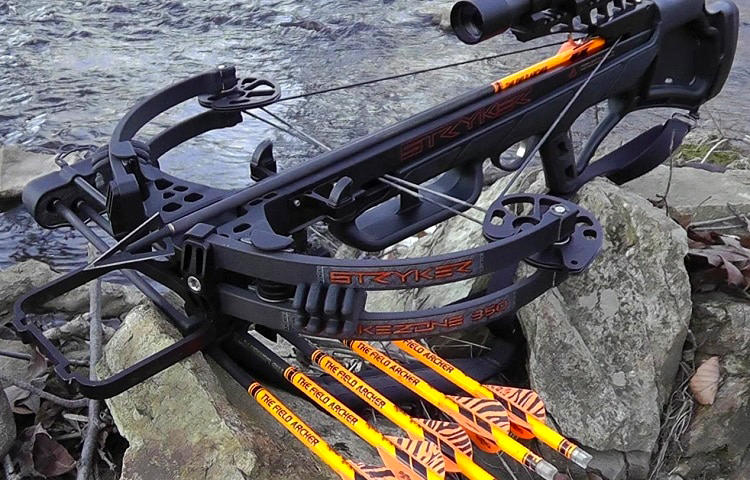Most people who get a crossbow without considering the draw weight tend to struggle initially. Eventually, they do learn; however, it could have been a lot better if they had chosen the right draw weight.
It is not only crucial for your own game but also to take out the target. So let’s see what draw weight actually means, how it works, and what you must consider before making the draw weight decision.
Contents
What Does Crossbow Draw Weight Mean?
All crossbows come with a draw weight which is the force required to pull the crossbow strings back. The crossbow strings have to be pulled back in order to cock the crossbow so that you can shoot the arrow or bolt.
For example, if a crossbow has 100 pounds draw weight, pulling its string back would be like lifting a 100-pound dumbbell from the ground.
You can think of a crossbow as a spring. You have to put energy in the spring to ensure it can shoot.
Similarly, the string on the crossbow has to be pulled back to stretch it. It allows energy to be stored in the string. The more the draw weight, the higher the energy you have to put in the draw.
Once the string is fully stretched, the energy transfers to the crossbow limbs.
When you pull the trigger and let the string loose, the energy stored in the limbs is released. This energy becomes the driving force for the arrow or bolt, which helps it move towards the target.
Also, the amount of energy determines the speed. So, if you have a crossbow with a higher draw weight, it will require more energy to be drawn, which translates into more power and speed.
Compound vs. Recurve Crossbow Draw Weight
While they are both types of crossbows, their draw weights act differently. For a recurve crossbow, the draw weight increases gradually as you start to pull the string.
For instance, a recurve crossbow with a 100-pound draw weight won’t be as hard to draw initially. However, as you keep drawing, the draw weight will go closer to the 100 pounds mark until it’s fully cocked.
In this case, the peak draw weight of 100 pounds is reached in the crossbow’s final cocked and locked position.
Whereas a compound crossbow’s draw weight is at its peak throughout the draw. If you are cocking a 100 pounds compound crossbow, the draw weight will remain 100 pounds from the beginning to the end until it’s locked.
This is one of the reasons why compound crossbows offer greater energy, power, and speed for a given draw weight compared to recurve crossbows.
Is the Crossbow Draw Weight Adjustable
Unfortunately, you won’t find many crossbows out there with adjustable draw weights.
The limbs of a crossbow are connected to the risers with bolts. All of these components are under tremendous pressure. If the bolts are loosened to reduce draw weight, the crossbow can potentially dismantle.
Nevertheless, if you really need a crossbow with adjustable draw weights, you can find one. However, it won’t be easy to find, and in case you do, you won’t have many options to choose from.
Different Crossbow Draw Weight Ranges
Now that you are familiar with the nitty gritties of crossbow draw weight, it is time to get into the details.
When you are out there finding a suitable draw weight, you are faced with three options: low, medium, and high draw weight ranges. Each range is used for specific purposes.
You can go for any range based on your need and use of a crossbow. So let’s get right into it!
Low Draw Weight
Crossbows that fall in the low draw weight range usually have a draw weight of 80 pounds or higher.
Some even go as low as 50 pounds; however, 80 pounds is still more common and falls on the lighter side of the low.
Commonly, you will find crossbows in this range with a draw weight of 100 pounds or higher. The reason is that most states require bow hunters to use crossbows with a minimum draw weight of 75 pounds.
As a result, 80-100 pounds or above draw weights fall in this range.
Medium Draw Weight
The medium-range is any crossbow with a draw weight between the range of 125 pounds 150 pounds.
Some crossbows in this range even go as high as 175 pounds or 200 pounds. However, this is the extreme side of the medium range.
Anything that goes beyond this range is considered high, and if you ever get to cock a crossbow with a draw weight of more than 200 pounds, you will understand why.
High Draw Weight
The high draw weight is found on heavy-duty crossbows with extreme power and speed. There is no range for high draw weight. Just that any crossbow with 200 pounds or higher draw weight falls in this category.
Professional crossbow hunters tend to go for this range who know their way around a crossbow. It is not recommended for beginners as they should gradually move up the draw weight range.
How to Find the Right Crossbow Draw Weight for You
Getting to know the definition and ranges of crossbow draw weight is one thing. Deciding what the right draw weight is for your calls for a totally different type of consideration.
The central aspect you want to be looking at here is your use of a crossbow. Do you want to use it for hunting or just for recreational purposes?
If your sole motive of getting a crossbow is to use it recreationally for target shooting on your property, go for anything you want. It literally does, no matter if you get a high draw weight crossbow or a low draw weight one.
Just make sure that your target is made explicitly for crossbow shooting. More importantly, make sure the draw weight is not too much for you to handle.
On the other hand, it is a totally different game zone if you are getting a crossbow to hunt. Since you won’t be shooting on your property, you have to ensure the draw weight you get is in line with the state requirements.
These requirements are put in place so that you get enough draw weight to take out the game instantly and efficiently.
Choose the Perfect Draw Weight Depending on the Game
Before we discuss this section, it is essential to note that you state must have already laid out the draw weights for each type of game.
You must adhere to all state requirements before entering the field. Usually, the minimum range set by any state is enough to take out all types of games.
Bowhunters who use less powerful recurve and compound bows are taking out the big game all the time. These bows have way less power than and lower draw weights than the least powerful crossbows.
So, whatever your state has laid out, it will be good. However, there are still suitable draw weights for the game type.
Deer Crossbow Hunting
Typically, a crossbow with a draw weight in the range of 75 to 125 pounds is more than enough to take down a deer.
However, this range is suitable for the standard 40 yards crossbow shooting range. If you want to shoot from a greater distance, then a heavier draw weight is recommended.
Elk Crossbow Hunting
Elks are members of the deer family and are one of the largest species among them. As a result, the heavier draw weight is required to take down an Elk.
Usually, you can make a good shot with a crossbow that has draw weight within the 150 to 175 pounds range. However, since this is now the medium draw weight range, you can have trouble cocking unless you use a cocking device.
Bear Crossbow Hunting
Bears come in a wide range of sizes. There are black bears which are relatively smaller, and the Kodiaks, which are pretty large in size.
As a result, the draw weight required to take out a bear depends on its size. You can take down a small bear with the same draw weight used to take down an Elk (150 to 175 pounds).
However, if you want to take out a full-grown bear, you will have to go as high as 200 pounds or higher.
Bighorn Sheep Crossbow Hunting
Bighorn Sheep are slightly bigger and bulkier than deer. However, they aren’t harder to take down than an Elk.
Therefore, you can take them down with a draw weight that falls between the deer and elk range which is 150 pounds.
Draw Weight Regulations by State
As mentioned earlier, it is vital to consider the state regulations set out for draw weight. Most states have set out a minimum draw weight in their territories.
Such as Arkansas and Indiana have a minimum draw weight limit of 125 pounds. At the same time, Maryland has a minimum draw weight limit of 75 pounds.
You must get all the information regarding draw weight regulations before making any decision or taking any action. If you fail to do so, you will have to face the consequences.
For instance, states like Michigan even have a minimum age for using a crossbow at ten years statewide.
In addition, North Carolina allows for a higher draw weight at 150 pounds, whereas North Dakota has different draw weight regulations for the Deer and Muzzleloader seasons.
There is mostly a minimum draw weight limit set and hardly ever a maximum limit. It is always better to go farther beyond the minimum range. You can check your state’s regulations for crossbow hunting here.
Final Thoughts
I am sure you now have the perfect understanding of at least the basics of crossbow draw weight and everything that comes with it.
If you are a beginner crossbow user, this is more than enough for a good start. However, if you are a professional, then you are on the right path.
It is also imperative to note that while I have mentioned specific ranges of draw weights for different types and games, these are not definite.
These are just some basic and standard things that I wanted to share with you. But, at the end of the day, it is you who knows what works best for them.
But I am sure everything will be approximately equal to what I have mentioned.

Hi, my name is Michael Goodman. As a skilled hunter and a man of the field, I will show you some sophisticated, intelligent, and useful hunting methods and techniques.

